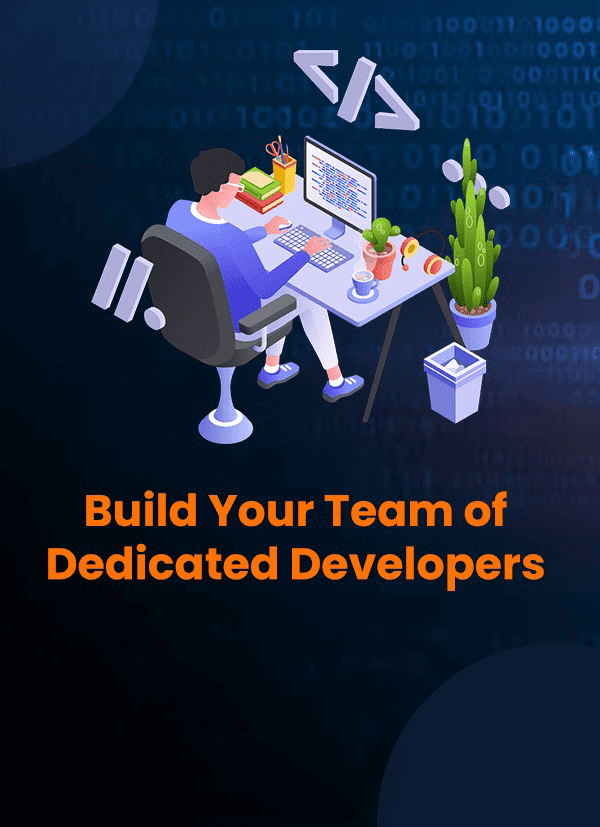Top Emerging IoT Trends to Watch in the Next Decade

Introduction
If we take a sneak peek into the last decade, one of the significant technological advancements that we witnessed was the adoption of IoT on a large scale. When we say the large scale adoption, we are talking about industries and enterprises. Over the years, more IoT devices have been used by people and so it is estimated that by 2025 there will more than 21 billion IoT devices in the market.
IoT market is not going to slow down anytime soon and it is believed by experts that the next decade will definitely see some significant changes in terms of IoT devices and its implementation. It will be widely adopted across different industries and will even complement other technologies to maked life better. Some of the IoT trends and development that we are expected to see around in the next decade has been mentioned here:
Key IoT Development Trends to Watch
Some of The IOT Trends and Development are mentioned here -
Rise in Industrial Adoption
When we are talking about the industrial revolution with IoT, we are not yet talking about the stage where the place will be automatically controlled. The stage where the “lights-out” will be completely automated within factories! However, what we are implicating here is that IoT will be used extensively across the industries over the years to come.
Industry-level applications like cobots, predictive maintenance, and remote access will all together lead to the better adoption of IoT technology or devices. Factory managers will do their best to expand the data-collection methods they have while implementing new IoT devices.
Internet of ‘Medical’ Things
The healthcare industry is one of the top industries of the time which is keen about introducing smart devices to assist their different services and functions. Such services include the diagnosis of disease to monitoring patient care.
The IoT technology in the healthcare sector will lead to the development of the market which develops consumer devices like wearables and devices for clinics and hospitals. The number of consumer wearable devices is greatly increasing in the market in the form of fitness trackers or smartwatches, and their numbers are expected to go high in the coming years.
Smart Cities
The cities in developed nations around the world are looking for new opportunities where they can implement IoT in order to enhance the planning and development of cities. Such cities are making use of smart devices to manage the energy consumption, to direct traffic intelligently and to notify the municipality to collect garbage bins when it gets filled up.
Today, Dubai, London, Hong Kong, Amsterdam, and New York have already turned out to be smart cities. More numbers will get added to the list in the coming years as IoT will turn to be a mainstream technology.
Edge Computing Becoming Critical
An alternative solution to cloud-based computing is edge computing and here, the devices process data at the edge of the network. With connections becoming more reliable in the coming time with the introduction of 5G, things will become easier when it comes to distributing and processing data to the edge of the network build on IoT. The businesses which are making use of IoT will be able to get benefitted from the processing power of edge devices simply by decentralizing their computing.
Big Data Convergence
Apart from implicating big changes in the way we live and do business, IoT also works towards generating large volumes of data from different sources. The platforms for big data have been developed with the aim of meeting the demands of storing such data and carrying out investigation for large scale data –which needs to be done to get the benefits of IoT to its maximum capacity. This is one of the current trends in IoT we are experiencing today and will be seen in the coming years too.
Big data and IoT go hand in hand and now the market has a good number of IoT devices that have been developed with the aim of producing decent amounts of data. When it comes to storage and analytic requirements, the cloud is considered to be a better option but when working with large volumes of data, it lacks some specifics. For the same reason, IoT needs to work on its big data part too.
Consumer Adoption of a Greater Level
In the coming decade, we will see a huge shift taking place in the way IoT is implemented in our lives. There will be a change from just the consumed-based IoT products to the industrial adaptation. The success of consumer-based IoT devices will lead to its pilot use across different industries. This will lead to a decrease in the number of IoT devices developed for consumers, all the while boosting the number of IoT devices for industries.
Data Security with Auto-ML
Data security remains the key challenge for many and so developers are constantly working on finding new methods like blockchain technologies, which can help them share data in a secure manner. Many industries will understand and accept the future of the machine learning model and adapt their businesses in a way that the downtime by model outputs can be prevented.
Just like the auto-ML toolset, machine learning model training is said to be much automated and will soon become popular too. More companies will come forward and increase their investment in the solutions that are associated with the Cloud.
IoT Security with Blockchain
It won’t take long for the industries, consumers, government and financial processes and entrepreneurs to turn smart, self-healing and self-governing. There are some startups that are coming together and building up their own territory above the IOTA tangle so as to develop components and modules for enterprises without having to spend on the Cloud and SaaS.
You will get to witness the monolithic and centralized computing models getting disintegrated into microservices which will be distributed over machines and decentralized devices. There will come a time when IoT will get into health, financial, governance and other areas where people have not thought about. Such kinds of IoT implementation will bring in a major difference in our lives.
Combination with Blockchain in Backend
The mass adoption of IoT comes with critical issues in terms of security, scalability, and adoption, yet there are many other issues that make it difficult to implement IoT. The majority of the software has been developed with the intention of collecting large volumes of data and it can be profitable to sell them here.
The main issue that comes in here is that the backend which is used to run the IoT devices has a centralized network. Therefore, the main issue in here now turns out to be trusted. When it comes to maintaining the data properly and safeguarding it, Blockchain is considered to be one of the top IoT technology trends.
If you want to go ahead with having smart devices at home, you need to deal with the trust issues that the customers have regarding those devices. This is important because the trust issue is not just limited to their identities. So one of the main IoT trends that you can plan to go for in the years to come is to choose blockchain as your backend.
Blockchain lets you save all your enormous amounts of data in a single place while decentralizing the security issue. It lets you build a token economy that can help you come up with a marketplace where data and other information can be sold to the providers by the users.
Looking For IoT App Development Company?
Final Thoughts
Here we have made an effort to list down the IoT development and trends that can merge over the period of next decade. The developments in this field are focused on making the life of people easier, secure and comfortable.








